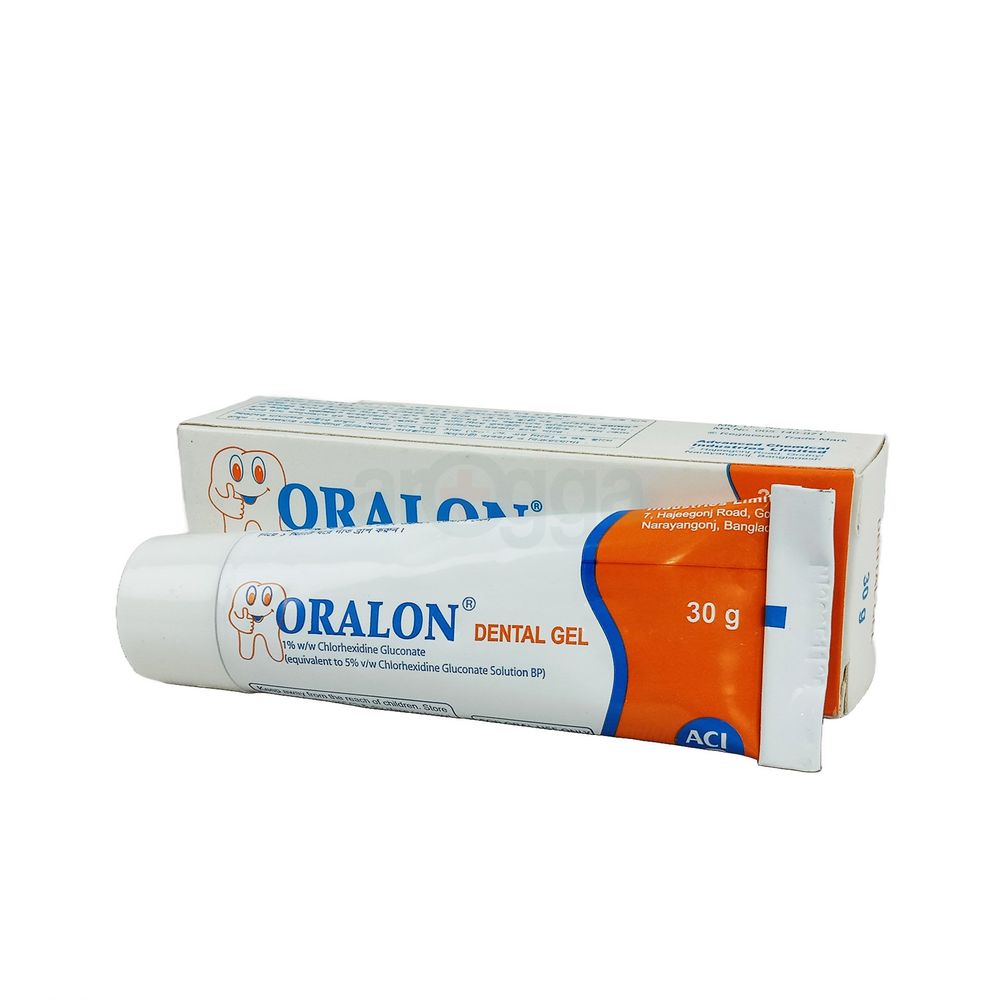

Out of stock
ব্যবসার জন্য পাইকারি দামে পণ্য কিনতে রেজিস্টেশন করুন
Register
0 People recently viewed this
Oralon Gel
ACI Limited
Generic: Chlorhexidine Gluconate 1 % Oral prep
Safety Advices
বাংলা
English
CONSULT YOUR DOCTOR
Oralon Gel may be unsafe to use during pregnancy. Although there are limited studies in humans, animal studies have shown harmful effects on the developing baby. Your doctor will weigh the benefits and any potential risks before prescribing it to you. Please consult your doctor.
SAFE IF PRESCRIBED
Oralon Gel is probably safe to use during breastfeeding. Limited human data suggests that the drug does not represent any significant risk to the baby.
Medicine Overview of Oralon Gel 1% Gel
Introduction
Oralon Gel is used in the treatment of inflammation of gums. It works by killing harmful microorganisms in the oral cavity.
Use it as directed by the dentist.
Uses of Oralon Gel
- Mouth infection
Side effects of Oralon Gel
Common
- Taste change
- Staining of teeth
- Hard Dental Plaque
How to use Oralon Gel
Take this medicine in the dose and duration as advised by your doctor. Check the label for directions before use.
How Oralon Gel works
Oralon Gel is an antiseptic that binds strongly to the surface of teeth, inner cheeks and gums. It works by killing the harmful microorganisms that cause swollen gums, tartar, bad odour from mouth, and other mouth infections.
What if you forget to take Oralon Gel?
If you miss a dose of Oralon Gel, please consult your doctor.
Quick Tips
- Use Oralon Gel after meals, it may affect the taste of foods and beverages.
- For maximum effectiveness avoid rinsing mouth (with water or any other mouthwash), brushing teeth, eating or drinking for 30 minutes after using the Oralon Gel.
- Oralon Gel may cause permanent discolouration of some tooth fillings. To minimize discolouration, brush and floss daily, focussing on the areas which begin to discolour.
- Do not mix/dilute Oralon Gel with any other product.
- Avoid contact with eyes and ears. If the solution comes in contact with your eyes, rinse well with water.
- Notify your doctor if you are or planning to become pregnant or are breastfeeding.
Brief Description
Indication
Dental and gum infection.
Adult Dose
Adult: As cream/gel: Apply to the affected area 2-3 times daily or as directed by physician.
Contraindication
Hypersensitivity.
Mode of Action
Chlorhexidine is a very potent cationic chemoprophylactic agent that has a broad-spectrum of activity against gm+ve and gm-ve bacteria. It is both bacteriostatic and bactericidal depending on its concentration. The bactericidal effect, which is achieved at high concentrations, is due to the binding of the cationic to negatively charged bacterial cell walls and extramicrobial complexes. Bacteriostatic effect is achieved at low concentrations which causes an alteration of bacterial cell osmotic equilibrium and leakage of potassium and phosphorus.
Precaution
Avoid eating, drinking, or brushing your teeth just after using this medicationAvoid contact w/ eyes. Do not inject or use in body cavities.
Side Effect
Local irritation. Chlorhexidine gluconate can stain teeth, dentures, tooth restorations, your tongue, or the inside of your mouth.
Interaction
Soaps, other anionic agents, borates, bicarbonates, carbonates, chlorides, citrates, nitrates, phosphates & sulfates.
ব্যবসার জন্য পাইকারি দামে পণ্য কিনতে রেজিস্টেশন করুন
Register